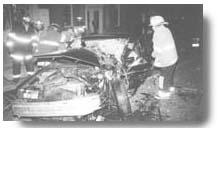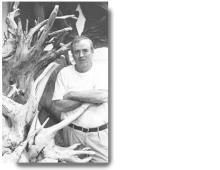Gas Leak At Marshall
Gas Leak At Marshall

If ever there was a smooth evacuation, East Hampton School District officials said this week, it was at the John Marshall Elementary School Tuesday afternoon - the whole operation completed "in a heartbeat."
It all began with a midafternoon accident "not uncommon at construction sites," officials said. A backhoe digging a drain line in a parking area 100 yards or so from the school cracked an old steel gas line, and it sprang a leak.
Workmen alerted the school's principal, the fire alarm was sounded, and 360 students and roughly 40 faculty and staff moved out of the building through a rear exit in "45 seconds," Thomas Lamorgese, the interim principal, told the East Hampton School Board Tuesday evening.
School Was Ready
The school had been prepared for such a possibility, noted Jim Dunlop, Chief of the East Hampton Fire Department, who was quickly on the scene.
In light of continuing construction at John Marshall, the Fire Department had approved an evacuation plan for the facility the week before school opened in September.
Mr. Lamorgese, who stressed that fire safety was a priority, said he had conducted several fire drills during the term, bringing evacuation time down from two minutes to less than a minute.
Service Shut Off
Dispatchers notified the Long Island Lighting Company, which arrived within 15 minutes to shut off the gas service to the school.
Firefighters attempted to close off the gas, but "were worried about breaking the line," said Mr. Dunlop. They opted instead to defer to the utility company.
"LILCO," he added, "is good about getting to gas leaks."
Though passers-by reported smell ing gas several blocks away, there was "never any danger to the school," said Jim Terry of Terry Construction of Riverhead, the subcontracting firm whose workman hit the line.
Gas lines generally are marked with tape so that workmen avoid them when using excavation equipment. But, Mr. Terry said, there were "some discrepancies" in the markings at the John Marshall site, which he said was "fairly typical with old utility lines."
Police and fire officials cordoned off the area until it was deemed safe to return.
Students were moved to the Learning Center, which houses the East Hampton Day Care Center, where they were dismissed.
Kindergarteners, who are normally bused back to John Marshall from their temporary digs on Meadow Lane by dismissal time, were instead transported to the Learning Center, where parents were directed to pick them up.
Service Restored
LILCO replaced a portion of the damaged steel pipe with plastic pipe, April Dubison, a utility spokeswoman, confirmed yesterday.
Service was restored by 7 p.m. Tuesday, and school was in session, problem-free, yesterday morning, Mr. Lamorgese reported.
"The kids thought it was a great adventure," Denise Simmons, the John Marshall Parent Teacher Association president, told the School Board Tuesday evening.
"It's too bad it had to happen," said Noel McStay, the East Hampton District Superintendent, yesterday. But the incident showed "how everyone really came together," he said.


